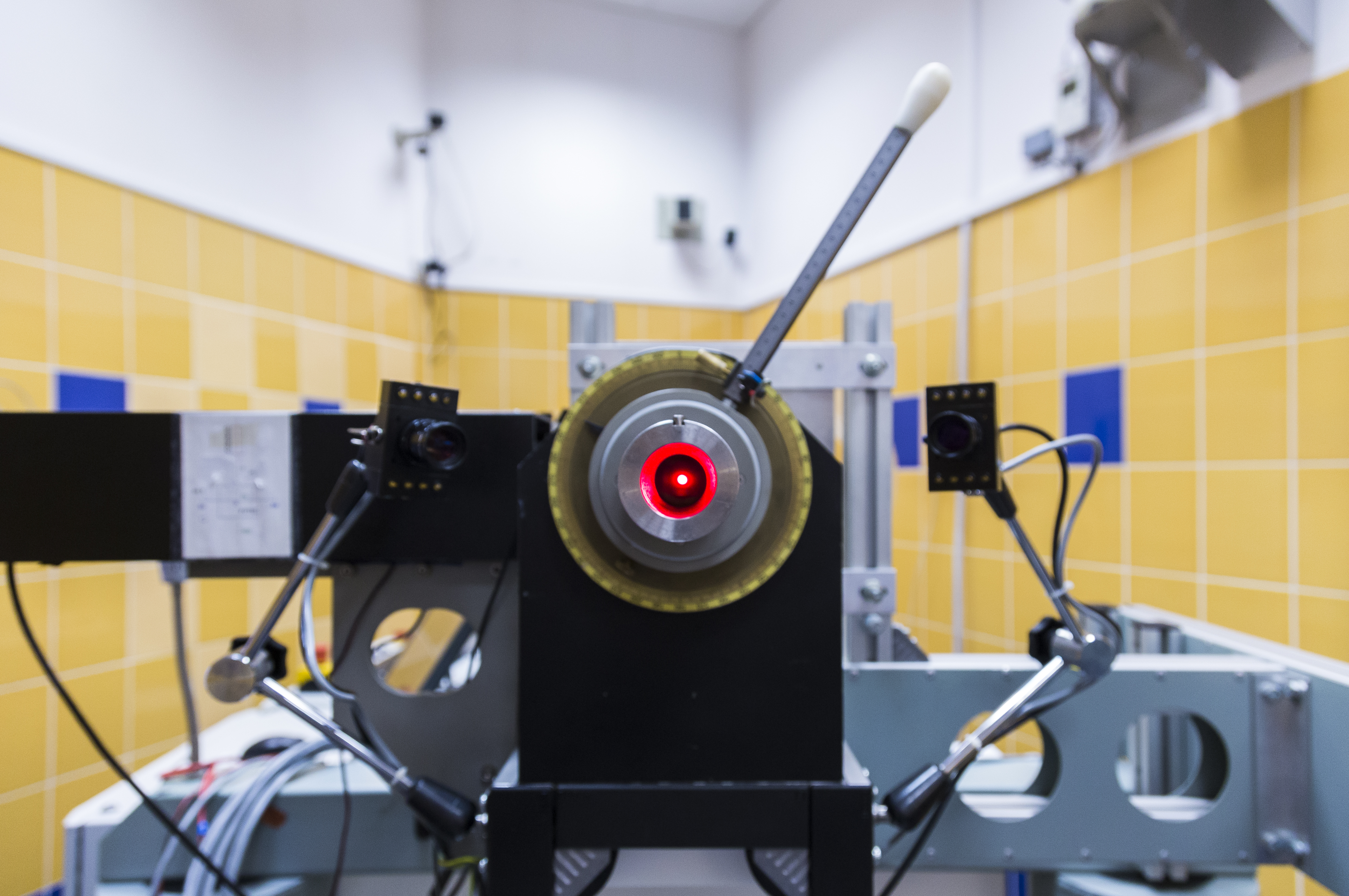Ask anyone about their knowledge of cancer treatment and this one word will most likely be the first to come out of their mouths - chemotherapy. This can be mainly attributed to a lack of knowledge regarding how different types of cancer can affect our bodies and the various options available to treat each cancer uniquely.
Over the past few years, advances in technology and medicine have given medical experts the opportunity to discover alternative methods for treating different types of cancer. This gives both patients and doctors an opportunity to weigh the pros and cons of each treatment form and decide on the best method to fight specific cancer types. In that regard, let’s take a concise look at some of the cancer treatment options currently available.
Radiation Therapy
Radiation therapy is a treatment that uses beams of high energy to kill cancer cells by damaging their DNA or create charged particles within cancer cells that damage its DNA by causing small breaks inside which beyond repair stop dividing cells or die.
DNA is broken down and eliminated by the body’s natural processes, but it can also damage normal cells which lead to side effects but most of the normal cells recover and go back to work normally.
There are 2 main types of radiation therapy
-
External beam radiation therapy (Teletherapy) works by the radiation from outside the patient’s body directly to cancer site inside. The external beam therapy can be over voltage x-ray, cobalt-60, proton beam.
-
Internal radiation therapy (Brachytherapy) works by placing a source of radiation as close as possible to tumors or cancer areas.
This type of radiation mostly effective in treating cancers of cervix, uterus, vagina, rectum, eye, and certain head and neck cancer. It is occasionally used to treat great, brain, skin, anus, esophagus, lung, bladder, and prostate cancer.
This treatment method is used to treat almost all types of cancer. Almost half the number of patients suffering from cancer undergo this form of treatment, hence why it is more commonly known than other methods of cancer treatment. There are a number of different reasons why an oncologist may recommend undergoing this treatment. For example:
-
before surgery to shrink a cancerous tumour and
-
after surgery to stop the growth of any remaining cancer cells.
-
It can also sometimes be recommended as the only form of treatment or
-
to alleviate symptoms caused by a cancer, taking into consideration that the disease has gone into advanced stages for some patients.
Given the fact that radiation therapy can damage both healthy and cancerous cells by destroying the genetic material which controls how cells grow and divide, it can cause an array of adverse side effects.
The side effects a patient may experience are also dependent upon which part of the body is being exposed to radiation and how much radiation is used1. A guaranteed side effect that patients may experience, regardless of the type of cancer suffered, is hair loss. Other side effects of radiation therapy may also include:
-
Nausea,
-
fatigue,
-
skin irritation on areas being treated,
-
dry mouth,
-
difficulty swallowing and
-
changes in taste and smell.
Read more about Radiation Therapy: https://training.seer.cancer.gov/treatment/radiation/types.html
Chemotherapy

Another commonly known form of cancer treatment, chemotherapy involves the use of aggressive drugs to either eliminate cancer cells, prevent them from growing or spreading to other parts of your body. Chemotherapy is usually recommended alongside radiation therapy, surgery or hormone therapy when treating cancer.
Chemotherapy shares similar functions and side effects as radiation therapy but can actually cause more damage to your body as compared to the latter form of treatment. In fact, some patients may also be at risk of:
-
suffering from long-lasting effects, even years after treatment has ended.
-
These include permanent damage to the heart, kidneys, lungs, nerves and reproductive organs.
The major difference between Chemotherapy and Radiation is the way of delivering. Sometimes, chemotherapy or Radiation therapy can be more effective than the other in treating a particular type of cancer and sometimes can complement each other to cooperate.
Read more : https://www.healthline.com/health/radiation-vs-chemo#which-to-choose
Many kinds of medicine are used in chemotherapy treatment. In many cases, medicines are given in combination, which means giving two or three different treatments at the same time. These combinations are known as chemotherapy regimens, such as in early stage of great cancer the regimen lowers the risk of cancer coming back. In advanced stage this makes the cancer shrink or disappear in 30-60% patient’s treatment.
These medicine target cells at different phases of cell cycle.
The reason Chemo drugs possibly target cancer cells better than normal cells is cancer cells are way more quickly form new cells than normal cells. Chemotherapy drugs cannot tell the difference between normal and cancer cells; this means means normal cells can be damaged alongside cancer cells which can cause side effects. As mentioned above, normal cells will recover from the effects of chemo or other kinds of treatment over time. But cancer cells are mutated cells and usually not recover from the effect of Chemo.
Read more : https://www.breastcancer.org/treatment/chemotherapy/medicines , https://www.cancer.org/treatment/treatments-and-side-effects/treatment-types/chemotherapy/how-chemotherapy-drugs-work.html
Immunotherapy
One of the toughest challenges that patients may face during their battle against the disease is that their cancer cells are able to avoid the body’s immune system’s disease “markers”3. Their weakened system either does not see them as threats or is incapable of fighting the disease. To combat the disease more effectively, a number of newly available immunotherapy drugs can help your body’s immune system to detect these cancerous cells better3. These drugs are also able to improve your body’s defenses and attack tumours more efficiently3. Immunotherapy drugs have been approved to treat name types of cancer. Even though it is not widely used as other kind of treatment yet.
A Food and Drug Administration-approved (FDA) form of gene therapy called CAR T-cell therapy uses your body’s immune cells (also known as T cells) to treat the cancer3. These cells are extracted out of your body by an oncologist and modified to include new genes which can improve your body’s ability to identify and kill cancer cells3. Currently, the drug named tisagenlecleucel is suitable for treating children and adults up to the age of 25 who suffer from B-cell acute lymphoblastic leukemia3. Another type of immunotherapy drug called sipuleucel-T was FDA-approved in 2010 and is used as a vaccine for metastatic hormone-refractory prostate cancer4.
Immunotherapy can be given in different ways included
-
Intravenous (IV) goes directly into vein
-
Oral in form of pills or capsules
-
Topical in form of cream run onto skin
-
Intravesical goes directly into bladder
Common immunotherapy side effects that patients may experience include:
-
skin reactions
-
Flu-like symptoms
-
Muscle aches
-
Shortness of breath or trouble breathing
-
Swelling legs (Edema)
-
Sinus congestion
-
Headache
-
Weight gain from retaining fluid
-
Diarrhea
-
Hormone changes including hypothyroidism
-
Cough
Read more about side effect of Immunotherapy : https://www.cancer.net/navigating-cancer-care/how-cancer-treated/immunotherapy-and-vaccines/side-effects-immunotherapy, https://www.cancer.gov/about-cancer/treatment/types/immunotherapy
Hormone Therapy

Hormone therapy is most often used to treat breast and prostate cancers.
It involves the administration of drugs into your body which prevents cancer cells from absorbing the hormones that they require to grow. This form of therapy may also be used in a combination with other forms of therapy such as chemotherapy or radiation therapy.
However, it can interfere with the functionality of certain hormones in your body. This depends on the type of cancer and administered drug, which can cause you to suffer from a number of side effects. For men suffering from prostate cancer, the use of hormone therapy can cause them to suffer from erectile dysfunction5. In women with breast cancer, the use of hormone therapy can cause vaginal dryness as a side effect.
Side effect in women after hormone therapy can be:
-
tiredness,
-
digestive system problem,
-
menopausal symptoms, hair thinning,
-
muscle and bones changes,
-
weight gain, headaches,
-
memory problem,
-
mood swings,
-
depression and
-
blood clots
Read more about side effects of hormone therapy:
Stem Cell Transplants
Blood stem cell transplants is a cancer treatment method which is used to treat a number of different blood cancers such as leukemia, multiple myeloma and non-Hodgkin’s lymphoma6. Stem cell transplants are only considered as an alternative should chemotherapy fail. This is because chemotherapy or radiation, which is used to kill blood cells, can also kill bone marrow6. Stem cell transplants can help restore the bone marrow’s ability to produce blood cells.
Stem cells can be sourced from a number of different places such as the bone marrow, bloodstream or a newborn’s umbilical cord blood6. After the transplant procedure is performed on a patient, it can take anywhere between 2-6 weeks before the new stem cells can produce new blood cells6. During this period, patients may also be given doses of anti-bacterial, anti fungal and antiviral drugs to prevent life-threatening infections from taking place6.
Proton Therapy

Proton therapy is a newer type of radiation therapy that uses protons instead of X-ray to treat several types of cancer and some non-cancerous tumours.
Proton is nuclear particle with a positive charge that can enter tissue to a limited depth, based on energy of the beam, and deposit most of their energy at the end of the beam. The proton beam is able to enter the body with quite a low dose of radiation and gradually increase in the last 3 mm of the beam to the dose required and then stop.
Studies have also shown that proton therapy can cause lesser side effects than radiation therapy as an oncologist is able to control where the proton beams deposit their energy.
Some of the cancers that proton therapy is used to treat include breast, liver, and lung cancers.
Similarly, it can also be used to treat tumours affecting the spine, base of the skull and pituitary glands.
And while proton therapy can cause a number of side effects, they tend to affect less healthy tissues as compared to radiation therapy.
However, the side effects experienced also depend on the part of your body which is being treated as well as the dosage of therapy being received.
For example, these side effects include:
-
fatigue,
-
headaches,
-
mouth, eating and digestion problems or
-
hair loss, skin redness or soreness around the area which is being treated.
Because Proton Therapy uses beam with more energy, late side effects which occurs months to years after treatment are usually stay permanent. Depending on area being treated, late side effects may include:
-
brain and spinal cord changes
-
Lung changes
-
Bowel changes
-
Infertility
-
Lymphedema (swelling of a limp)
Moreover, any kind of radiation therapy including Proton slightly increases risk of developing new cancers.
Read more : https://my.clevelandclinic.org/health/treatments/17882-proton-therapy/risks--benefits
Alternative Types of Medicine
Complementary and alternative cancer treatments (CAM) may not necessarily be effective at completely curing cancer but can help you cope with selected symptoms and its accompanying treatment. However, it is important to identify which CAMs are generally safe and beneficial for your body and to differentiate them from the ones which can actually cause more harm than good.
Acupuncture is a type of CAM which can help in relieving nausea caused by chemotherapy. It can also aid in relieving pain suffered by patients with certain types of cancer.
Aromatherapy, on the other hand, incorporates the use of fragrant oils to provide a calming sensation8. These oils can be applied onto your skin through a massage or heated to release their scents into the air. However, for patients who suffer from breast cancer, applying these oils directly onto their skin can actually cause allergic reactions and thus should be avoided altogether.
It is comforting to know that through extensive research on different types of cancer, the evolving landscape of cancer treatment is gradually being regarded as a plausible cure for the disease. And although these new technologies may still be in the clinical trial phase, it is worth noting that the brilliant minds behind cancer research are keeping us on the right track towards a future where the chances of beating the disease is higher than ever before.
There’s more about alternative cancer treatment to explore : https://www.mayoclinic.org/diseases-conditions/cancer/in-depth/cancer-treatment/art-20047246
If you are interested in health insurance that covers cancer, fill in the form below and click "Submit". Our consultant will contact you back within 24 hours. 
.png)
